The Ethical Stack
Practical Tools for Ethical Reflection in Connected Technology
- Client: CIID Research, VIRT-EU Consortium (ITU Copenhagen, LSE, Uppsala University, Politecnico di Torino, Open Rights Group)
- Year: 2019–2021
- Role: UX Designer, Wireframer, Prototype Developer
- Tags: Ethics, UX Toolkit, IoT, Prototyping, Research
Project Overview
The Ethical Stackis a toolkit designed to help tech teams reflect on ethical and social impacts throughout the design and development process. Developed as part of the VIRT-EU academic research initiative, the project aimed to integrate practical ethics into product workflows without slowing them down.
It was deployed and tested acrossCopenhagen, Amsterdam, and Londonthrough dozens of hands-on workshops with real teams. The toolkit includes printable card decks, worksheets, facilitation guides, and a lightweight digital prototype centred around one core idea: ethical reasoning can (and should) be part of fast-paced design processes.
Motivation & Opportunity
Across the connected tech industry, conversations about ethics often remain theoretical or after the fact. Our team recognized a need for tools that embed reflection into product development in atimely, tangible, and team-basedway. The Ethical Stack was conceived as astructured intervention something any startup or innovation team could pick up and use together.
Workshops with IoT teams revealed a consistent challenge: ethical concerns often surfaced too late. Our goal was to shift that timing forward to the moments when product direction was still fluid.
My Role & Team Structure
I led thedesign and development of the tool’s user experience, working closely with researchers and domain experts. My contributions included:
Translating ethical theory into clear, actionable steps.
Designing the UX flow of the toolkit’s three-phase journey.
Wireframing and prototyping low-fi digital modules and printable artefacts.
Testing tools live with teams and iterating based on feedback.
The collaboration involved regular sprints with ethicists, social scientists, and CIID designers. Each sprint began with theory and ended with a tested prototype. I owned the design logic and interaction patterns across physical and digital formats.
Constraints & Challenges
We worked withtight timelines and modest funding and often juggled betweenremote and in-person workshops. COVID disruptions forced us to pivot our facilitation methods for hybrid teams.
Some key challenges:
Attention Span: We assumed teams could dedicate half a day it turns out 1–2 hour blocks were more realistic.
Remote Access: Offline-first materials became critical when travel stopped.
Prototype Depth: A full app was out of scope but we needed enough interactivity to guide teams.
These constraints led us to focus onpaper-digital hybrids: printable cards, flexible flows, and minimal tooling friction.
Research & Exploration
Our process combined:
Ethical theory reviews(virtue ethics, care ethics, capabilities approach)
Founder interviewsand observations of startup team habits
Role-play testingwith design students and early-stage tech teams
We also studied analogues like serious games, bowtie risk tools, and speculative design workshops. A key insight:simple visuals and physical engagementoutperformed text-heavy forms or abstract prompts.
Design & Product Thinking
The toolkit revolves around athree-phase flow:
Create & Share
Map your product’s elements across a layered “stack” (Device, Data, Context, Team, 3rd Parties) see .
Connect & Question
Receive value-driven challenges (Responsibility, Autonomy, Transparency, etc.) related to your stack see and .
Consider & Re-think
Discuss tensions and brainstorm adjustments then feed them into your design see .
These flexible and time-box phases enable teams to engage deeplywithout overwhelming cognitive load.
We emphasized low-fidelity formats withvisual metaphors, like a “bowtie” layout for impact mapping and branching futures and an estimated timeline diagram for facilitators .
Technical & Prototyping Systems
While primarily physical, we created aFigma-based web prototypeand minimal JavaScript tooling to support digital interaction . Key tools included:
Figmais for interface layout and team feedback.
Miro for remote facilitation during COVID.
Print-and-fold cards easily iterated and deployed.
We also designed iconography for each tool phase , , to keep the system visually consistent and intuitive.
Process & Workflow
We worked insprints across cities, each including:
Research or insight-gathering
Tool refinement and layout
Workshop testing and team feedback
We added aremote facilitation guideduring the pandemic to ensure usability even in virtual settings. We also shortened modules after noticing that overly long sessions killed team energy.
Major Changes & Iterations
Our most significant pivot: replacing an early 90-question ethics questionnaire with a set of concise, visually organized card decks. Teams reported that long forms drained discussion energy. The shift tomodular, tactile formatsmade the sessions more playful and collaborative.
We also added timing guides and phase-specific icons to support non-expert facilitators in running sessions smoothly.
Final Outcome & Reception
We shipped abox-format toolkit, including:
3 phase-specific card decks
Worksheets for mapping, impact, and revision
Facilitation guides
A lightweight digital prototype
The toolkit was tested and praised by:
Over adozen early-stage startups
Multipleuniversity courses
Cross-functional teams inCopenhagen, Amsterdam, and London
Feedback highlighted its ability toturn abstract ethical concerns into concrete, actionable dialogue. Teams reported more alignment, better tension surfacing, and a stronger shared vocabulary around ethics.
Reflection
I’m proud of how weoperationalized academic ethics theory into real-world design tools. The biggest challenge was balancing depth with usability but the toolkit now strikes a solid balance.
I also grew significantly in:
Translating theory into UX flows
Designing for hybrid (print + digital) environments
Facilitating meaningful discussion in interdisciplinary groups
If I could do it again, I’d integrate lightweight analytics from the start and accelerate the path toward a more robust digital app companion.

ethical_01
“Populate Your Stack” screen showing the multi-layered stack (Device, Data, Context, Team, 3rd Parties) with new device element entry (“power supply”) overlaid.

ethical_02
“Enable Your Values” view illustrating interconnected value nodes (Responsibility, Transparency, Autonomy, etc.) with a modal prompt asking “Will the device reduce individuals’ ability to make their own decisions?”
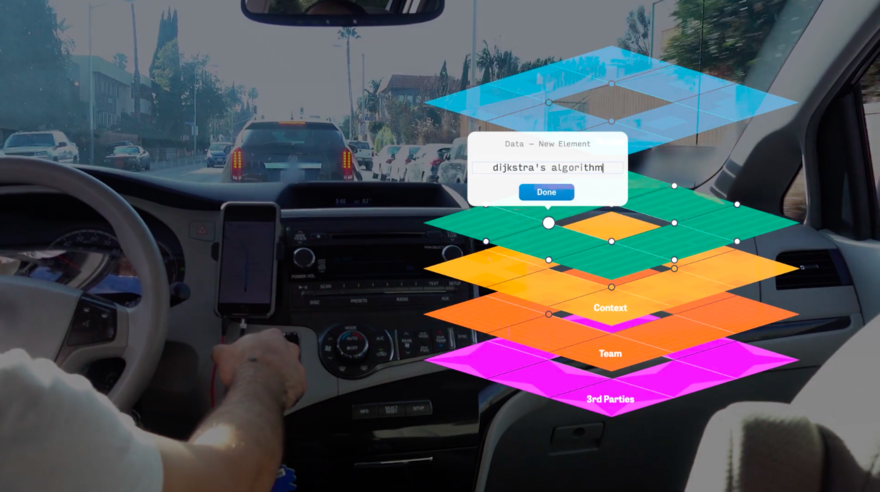
ethical_03
Augmented-reality style prototype overlay showing the stack layers on a car dashboard with a new data element entry (“dijkstra’s algorithm”) in progress.
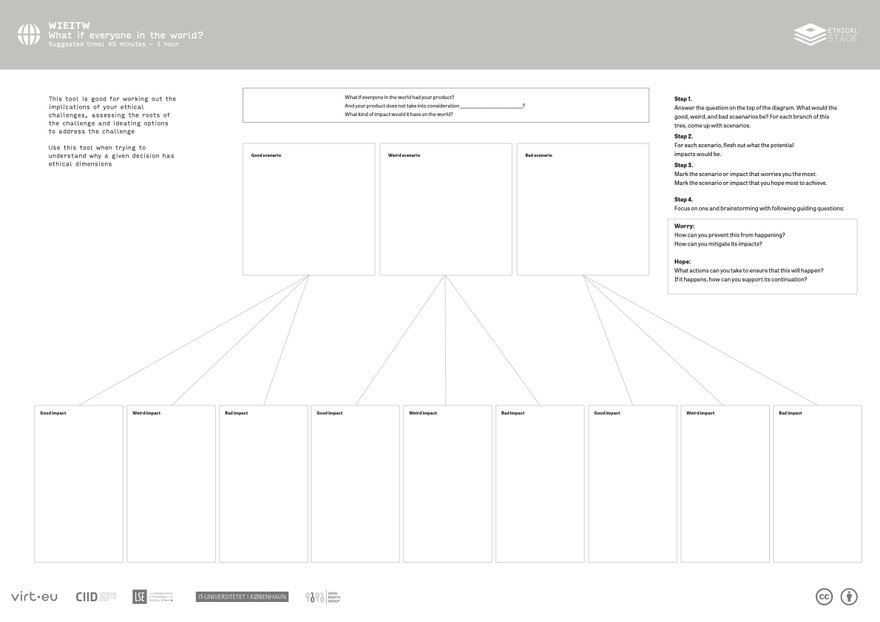
ethical_04
“What If Everyone in the World?” worksheet layout—three scenario boxes (Good, Weird, Bad) branching into nine impact boxes for systematic ethical foresight.
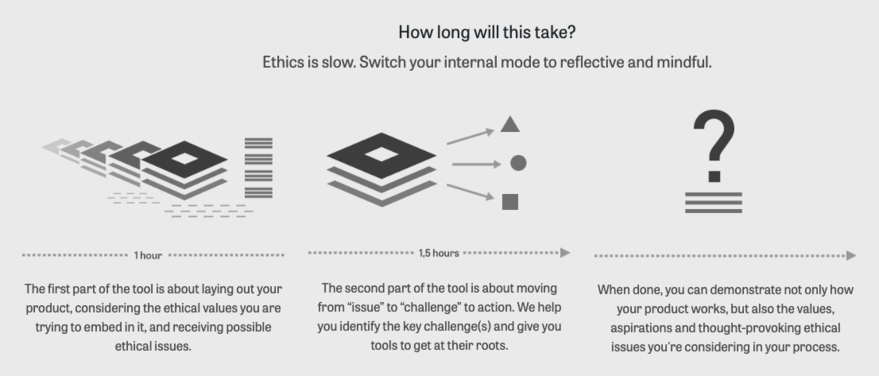
ethical_05
Timeline diagram titled “How long will this take?” outlining the three-phase flow: Stack population (1 h), values challenges (1.5 h), and final reflection.
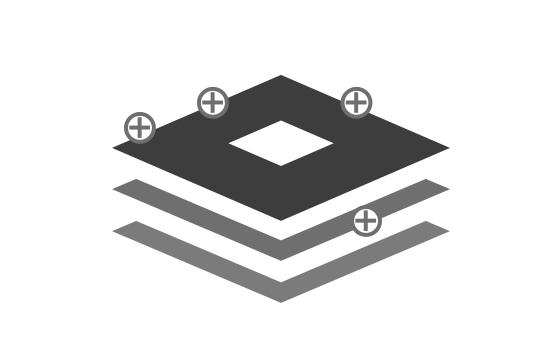
ethical_06
Iconography for the stack entry phase—stack layers with plus symbols marking where new elements can be added.
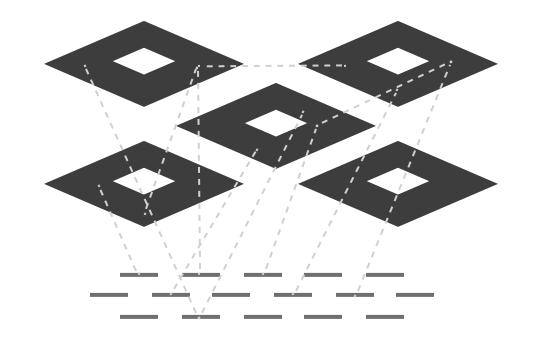
ethical_07
Iconography for the values-to-challenge phase—dashed lines linking stack layers down to an ethical issue plane.
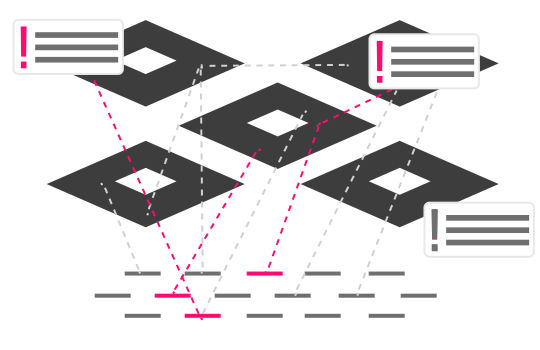
ethical_08
Iconography for the challenge review phase—highlighted ethical issues in pink with callouts on the stack-to-issue links.
